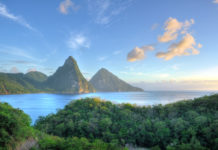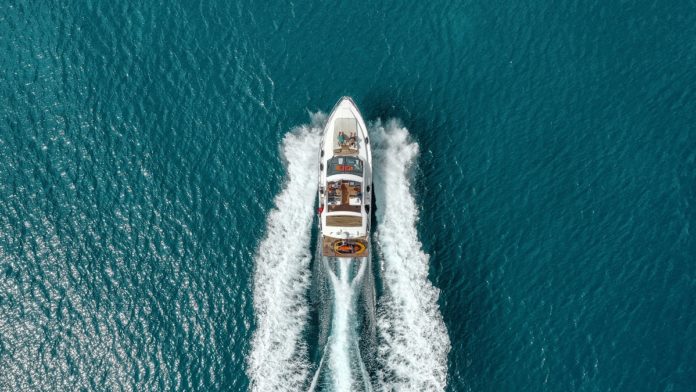
Circumnavigating the globe is not a goal for the faint of heart, and it takes a lot of planning. One of the earliest decisions to make is the boat to choose, and how big it should be. “Navigating the World: Choosing the Right Size Boat for Your Round-the-World Sailing Adventure”
There are a lot of factors that go into the decision, everything from budget to how many people will live on board. And while there’s no right answer to the question for everyone, thirty-five to forty-five feet is the most common size range, for many good reasons which we will explore. And can certainly sail around the world in something larger or smaller.
General Considerations for Boat Size
The first thing you need to do is plan your crew. Are you a brave solo sailor, a sailing couple, or a family? Will you take on crew along the way, or sail with only who you initially leave with? This is one of the defining questions, because circumnavigation under sail is a slow business, and you’ll be living together for a long time.
Beyond how many beds and who sleeps where, there are many other things to consider. There are strengths and weaknesses of every size range.
Small boats are easier to handle
Whether you’re maneuvering in close quarters in a marina or wrestling sails down reef to reef as the weather builds, small boats are just easier to handle. They have less momentum when moving, the sails are smaller, the loads are smaller, and one or two people can handle smaller boats better in most conditions.
Bigger boats are faster
Speed is a large nod to big boats. Boat speed for displacement hulls is limited by the waterline length of a boat. The longer the waterline, the faster the theoretical top speed of the boat. So longer cruising boats will almost always be faster than smaller ones.
While cruisers aren’t often concerned about sailing fast, a difference as small as half a knot can add days to a trip when crossing thousands of miles. Speed helps you dodge weather, and you need fewer stores for a quicker trip.
Larger boats are more stable
Small boats are light, large boats – especially monohulls – weigh a lot more. You can feel the difference the second you step on board. A two hundred pound man stepping on a fifty-foot sailboat will hardly move it, but the same man stepping on a thirty-footer will make it tip and rock. A large lead keel adds a lot of stability and stiffness to a boat, and it will move more comfortably through waves and at anchor.
But the type of boat and how it’s built can have as much of an impact on stability as size. A beamy thirty-two foot boat with a full keel will be a lot less tender offshore than a forty-five footer with a deep fin keel, so if stability is important, look past size alone.
Bigger boats carry more stores
More water, more fuel, more food, and more personal gear fit into a big boat. That’s just physics – the volume of a boat increases to a power of the beam. Adding 10% to length to a boat adds much more than 10% in displacement and carrying capacity.
For a solo sailor, living space and stores are much less pressing questions than a cruising family or a couple planning to bring crew with them. More people mean more food, more sleeping space, and more gear.
Big boats can be more complex
This is a double-edged sword. Space and battery power limit how many systems you can install on a small boat. To their advantage, simple systems offshore and in remote places are good, because it means fewer things to break and maintain. But the cost is in comfort and capability. You may give up hot showers and frozen foods for that simplicity.
Bigger boats can not only have more comfort systems, they can also add systems to make the big boat easier to handle with fewer people. Good instrumentation, power winches and furling, windlasses, and other tools can bring the extra work of handling a big boat down.
The longer the yacht, the more expensive to buy and own
The economics of boat ownership are well known. Just as the volume increases quickly with length, so does the purchase cost. And beyond buying the boat, the ongoing ownership costs of a larger boat add up quickly, and continue over the life of the boat. Marinas and other services charge by the foot, and buying four cans of bottom paint instead of one or two adds up at over $200 per gallon.
Your plan may dictate the best size

It’s not just how many people you sail with that dictate the space you need, but also how you plan to circumnavigate. If you’re planning to spend five or ten years meandering around the world, then speed isn’t a problem. But if you’re joining an around the world rally with a circumnavigation in twelve to eighteen months, you’d be hard pressed to do it on a slower boat.
And how you get there is important, too. Island hopping across the Pacific is slow and comfortable, and a pretty gentle route. But heading down the coast of South America to do a high latitude crossing in cold weather means you need a lot more boat.
Finally, the slower you go, the more time you’ll spend not sailing. And boat size has a tremendous impact on comfort at anchor. A tiny boat may work fine for slow, solo-sailing meander around the world, but a larger group will need some elbow room for those months of exploration when you’re stopped.
Read also: Top 3 Yachts For A Memorable Mediterranean Yacht Charter Experience
Sailing around the world: Monohull or Catamaran?

The choice of a monohull versus a catamaran is a topic of its own, and there are many advantages and drawbacks to either type of boat. Issues of safety, comfort, reliability, price, and personal preferences all go into the discussion.
More monohulls have sailed around the world
While catamarans aren’t a new concept, the blue water cruising catamaran is a more recent development. Because monohulls have been circling the globe for over a century, more of them have completed the journey. That doesn’t mean they are inherently superior, but that there is more data available about their suitability to the task.
Catamarans are comfortable (except when they’re not)
At anchor, it’s tough to compete with a catamaran for comfort and stability. The huge bridge deck area and cockpit make for spacious living quarters, and the broad platform doesn’t rock and roll. And while sailing, a catamaran does not heel much, so sailing on more upwind angles is more comfortable without all the tipping.
But in terrible conditions, catamarans can be miserable. Steep, choppy waves are uncomfortable for any boat, but a catamaran may pound those waves with a low bridge deck. Cats with lower bridge decks are more prone to this, but it can happen to any catamaran if the waves are big enough. Constant pounding for hours or days is miserable.
Monohulls are usually cheaper
Building a single hull is much easier than building two hulls and joining them with a bridge deck that won’t flex and twist under all the loads at sea. And material costs are higher for two hulls, as there is so much more volume. And many marinas charge extra for multihulls because of their high beam, sometimes they may charge you for two slips!
Safety Comparisons
If a monohull capsizes, it has a keel to right it, and most monohulls will roll back from it, eventually. Catamarans will not. This is often touted as a major safety difference, and it is a fact to be considered. But consider also that with two hulls and no heavy keel, catamarans are very difficult to sink.
Cruising catamarans are not sailed in a way likely to flip them. The catamarans most likely to capsize are high performance racing catamarans, not cruisers laden with gear and stores and sailed for comfort, not speed.
A full analysis is beyond this article, but both types of boats have safety risks, be it capsizing or losing a keel, with the worst-case scenario of either being quite rare. It’s important to come in with your eyes open to make a realistic determination of the risks you accept.
Read also: Best yachts for transatlantic: our selection and advices for 2023
Monohull sizes to sail around the world

These are rough guidelines only, and you will have to look more closely at individual boats for living space and performance requirements.
Under Twenty-five Feet
While boats under twenty-five feet have sailed around the world, those who did it were on very specialized adventures. The sort of trips that establish your name in the Guinness Book of World Records or the sailing hall of fame. These are cramped trips on very small boats by one person. You can do it, but it’s more of a stunt than a lifestyle.
Twenty-five to thirty-five feet: for cost conscious adventurers
If you are sailing around the world on a boat under thirty feet, more power to you. It’s possible, but it will be slow and possibly cramped. Thirty to thirty-give feet gets to more reasonable ground for a cruising couple, but too small limits room for gear and stores. But it is a very affordable way to get out and sailing. You’re unlikely to have hot water, and refrigeration is limited.
Thirty-five to forty-five feet: the sweet spot
This size range is the sweet spot for many cruisers. Cruising couples, small families, and other groups do well in this size without costs escalating. The longer boats can get some faster passages and give more range and stores. These boats can have water heaters, more refrigeration and instruments, and even freezers.
Over fifty feet: comfortable, capable, and costly
A couple can comfortably sail larger monohulls with the right sail handling equipment, and they are also good for larger families. With more room for comfort systems, a fully equipped boat over fifty feet will lack for little. Costs are higher, but passage times are a lot faster.
Catamaran recommended sizes to sail around the world

Catamarans have more volume for the equal length in monohulls, but their performance drops off dramatically if overloaded.
Under thirty feet: few and far between
Tiny catamarans rarely have the stores and carrying capacity for crossing oceans, there have been very few built. Most catamarans this small are more suited to coastal cruising.
Thirty to forty feet: Relative comfort and speed
Starting in the low thirty-foot range, there are some solid catamarans capable of blue water sailing, and they offer a good balance between comfort and budget. They aren’t always the fastest, but you’ll have no lack of living space, even if cargo capacity is light.
Forty to fifty feet: the catamaran sweet spot
Manufacturers have focused on the mid-forties in catamaran length, and there are so many options in a broad range of price, style, and configuration. You can find lighter, faster cruising boats or heavier boats with more carrying capacity and interior volume.
Over fifty feet: sail the world in speed and comfort
Larger catamarans are redefining the terms “performance cruising” and “comfort.” When you get towards fifty feet and beyond, the interior volume of these boats is amazing. Some builders have focused on plush comfort, while others focus more on sailing performance. In this range, the boats can get quite expensive, but you’ll have a sailing experience like no other.
The best boats models to sail around the world

We’ve selected a few solid boats to look at for sailing around the world. It’s not an exhaustive list, it’s a place to look for boats that match your requirements for space, speed, and budget. Every boat listed is one model from a quality brand of boats, so explore the entire range of models for options.
Monohulls
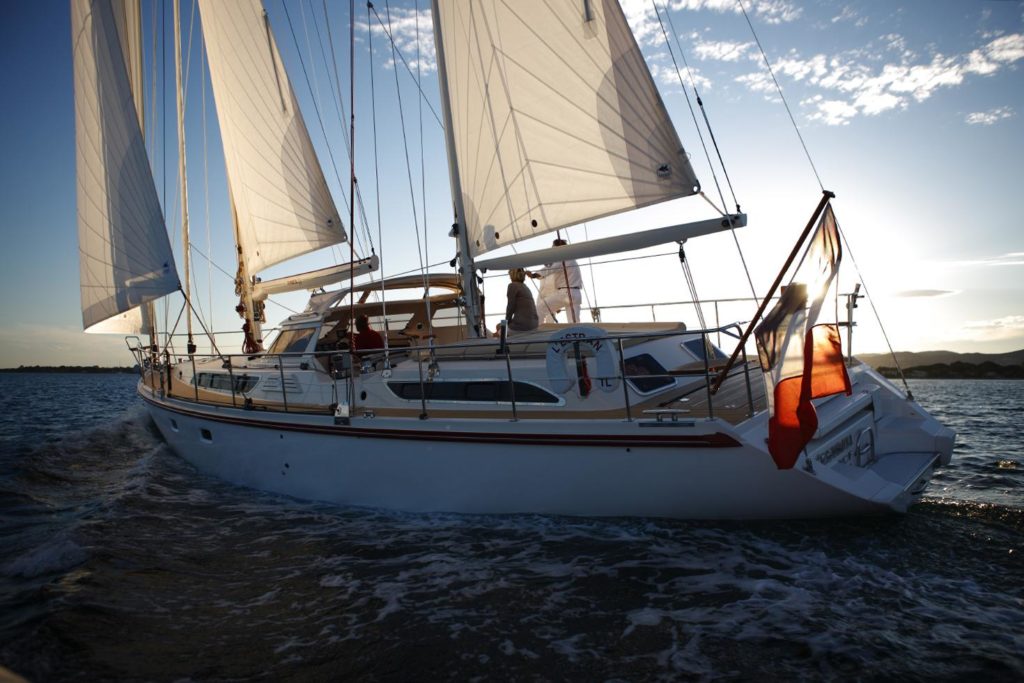
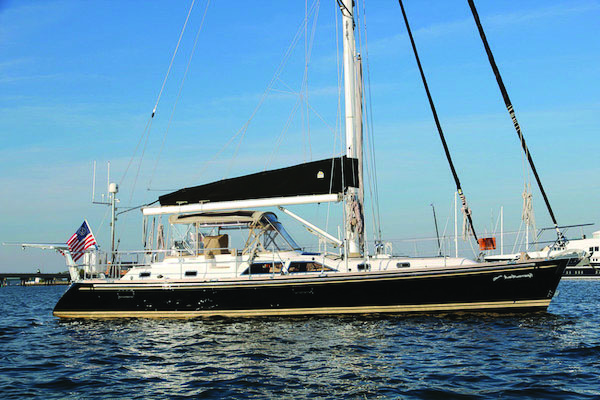
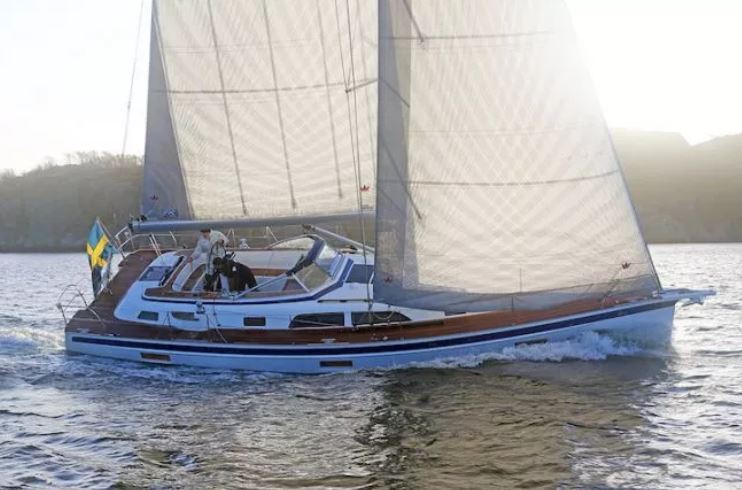
Westsail 32 – a small, sturdy, comfortable boat that will take you where you want to go. Although Westsail went out of business years ago, this model and others are available on the used market, and the Westsail 42 is another popular option.
Valiant 40 – Another classic, older cruiser, the Robert Perry designed Valiant 40 broke a lot of rules about what was supposed to be on a small, ocean-going sailboat. The result was one of the fastest forty-footers for its time, and still an excellent performing, sea-worthy boat.
Hallberg-Rassy 40C – one of the latest offerings from this Swedish builder, it features a modern design built to Hallberg-Rassy’s exacting standards. The entire range of Hallberg Rassy yachts, old and new, are solid, capable blue water sailboats that can handle anything.
Hylas 46 – A good medium displacement cruiser, it has plenty of space for a couple or small family. It sails well, and doesn’t break the bank.
Amel 54 – Cruising ketches from French builder Amel have a fanatic loyal owner base, because of the well thought out and practical designs coupled with solid, high-quality construction.
Read also: Five Easy Beginners-Friendly Sailing Trips And Destinations
Catamarans
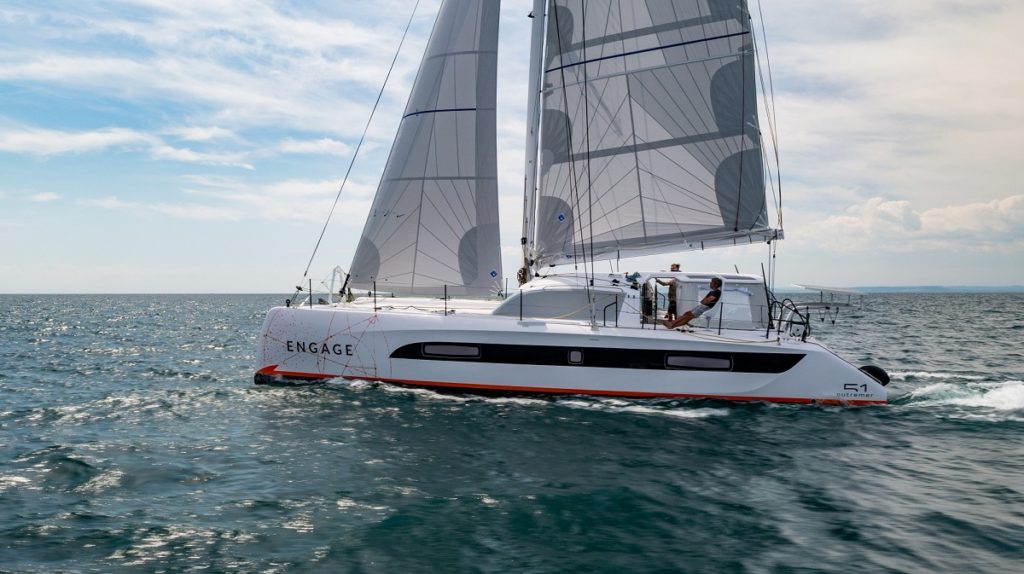
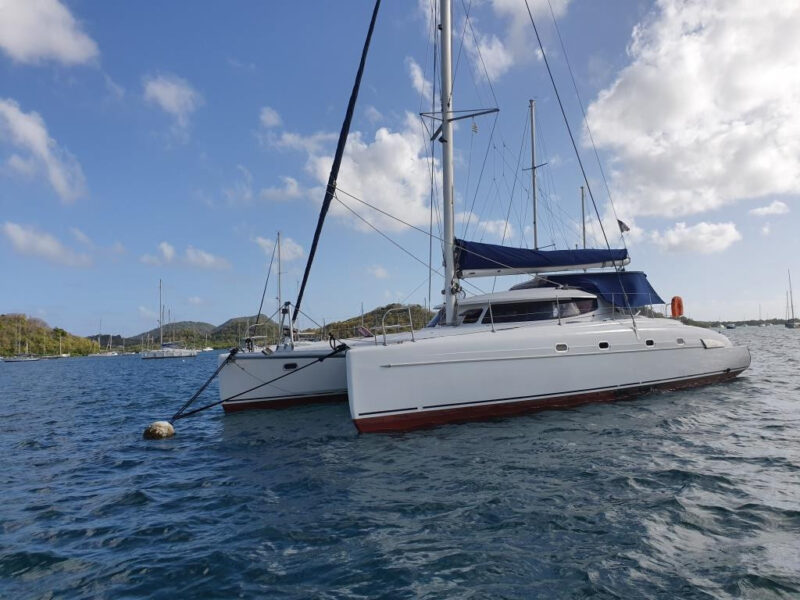
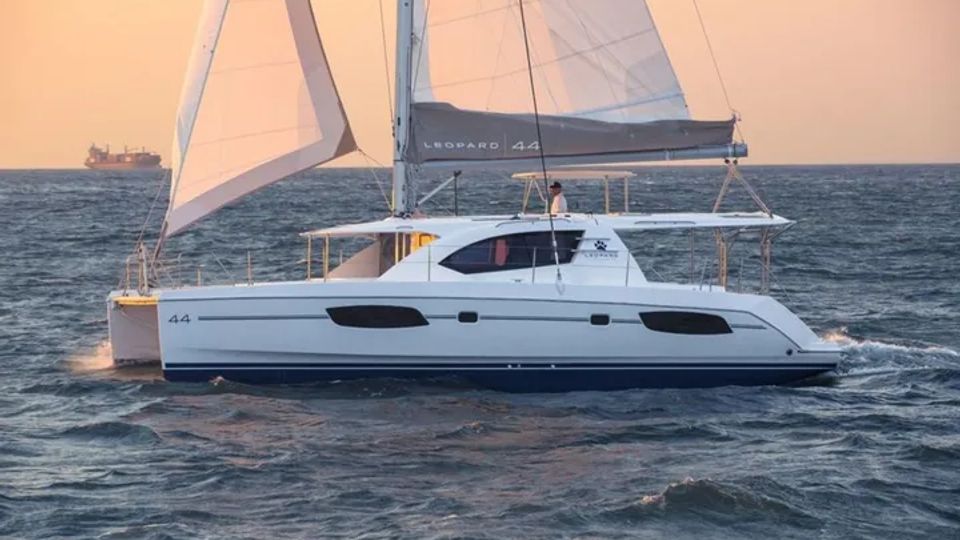
Gemini 105M – At 10.5 meters (34′) this is one of the smallest and most successful ocean-going production catamarans. The Gemini Legacy 35 is an updated version which is also still an excellent option in the small cat market.
Atlantic 42 – The Chris White designed Atlantic catamarans are known for their speed under sail and interior comfort. This is the smallest of the Atlantic catamarans, but it will not disappoint you if you’re looking for a little more performance.
Leopard 44 – Built in South Africa by Robertson & Caine, Leopards are great for on the water comfort and easy handling. The 44 is available in an “owner’s” version, but is also a very popular boat in the charter fleets. Plenty of space for a family.
Fountaine Pajot Bahia 46 – The French-built Fontaine Bahia is an earlier example of one of their many good sailing, comfortable cruising catamarans.
Outremer 51 – while we know Outremer best for screaming performance, their boats are also comfortable, well built, and spacious. If you’re going large and speed is your thing, you won’t go wrong with any of their boats.
The right size for YOU

Yes, there are “sweet spots” and “ideal ranges” for boats we can talk about, but no one can dictate the best boat for you and your plans. Remember, when you are looking at boats and considering size, that it needs to work for your plan, your budget, and your skill level. Buying too much boat can be as much of a mistake as going too small for your needs. If you can’t handle the boat or the finances cause you stress, it won’t be fun.
So remember when you look and read all these recommendations, they’re just to give you a baseline in your search for the perfect sized boat for you.




